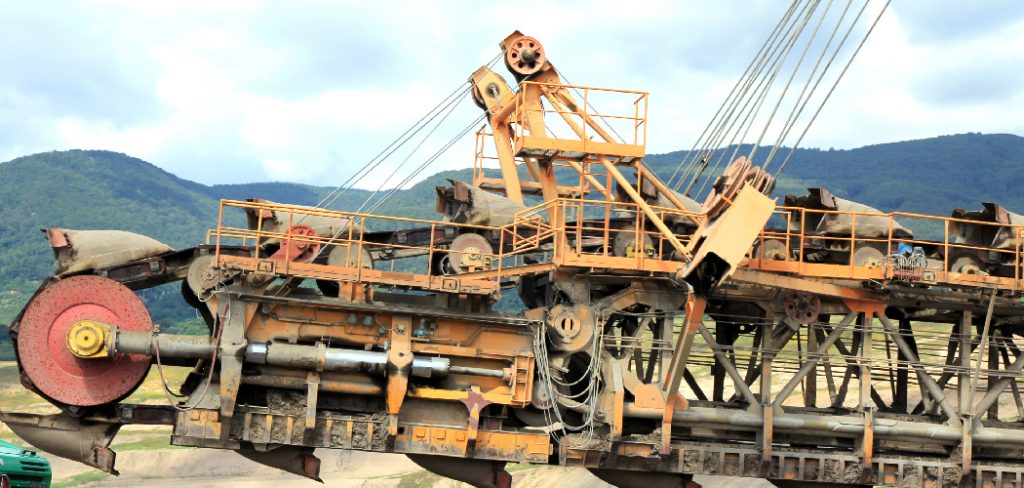A jaw crusher is a vital piece of machinery widely utilized in the mining and construction industries. Its primary function is to break down large rocks and materials into smaller, more manageable pieces for further processing or use. This equipment operates by using compressive force to crush materials between a fixed jaw and a moving jaw, creating a V-shaped opening.

As one of the simplest and most effective crushing equipment, understanding its working principle is essential for ensuring its efficient operation and optimal performance. In this blog post on how does a jaw crusher work, we will discuss the key components, working mechanism, and applications of this equipment.
Key Components of a Jaw Crusher
A typical jaw crusher consists of two jaws, one fixed and the other movable. The fixed jaw is mounted on a frame while the movable jaw is connected to a moveable swing arm. The movement of the swing arm allows the movable jaw to move back and forth, crushing the material against the fixed jaw.
Other important components include:
Flywheel:
A heavy flywheel is attached to the eccentric shaft, providing energy for the crushing process. It also helps maintain a constant speed and momentum, ensuring consistent crushing.
Toggle Plate:
The toggle plate is a safety mechanism that prevents the jaws from opening too wide or becoming damaged. It also allows for the adjustment of the discharge opening size, depending on the material’s desired size.
Bearings:
Bearings support the eccentric shaft and help reduce friction between moving parts, allowing for smooth operation of the jaw crusher.

Pitman Arm:
The pitman arm connects the movable jaw to the eccentric shaft and provides the necessary motion for crushing materials.
8 Simple Steps on How Does a Jaw Crusher Work
Step 1: Sizing the Feed Material
The first step in operating a jaw crusher efficiently is determining the appropriate size of the feed material. It is crucial to ensure that the raw material being fed into the crusher matches the machine’s capacity. Oversized material can lead to blockages, reduced efficiency, or damage to the crusher.
To avoid these issues, it’s recommended to use a screening process to remove any materials that exceed the maximum size limitations. Correctly sizing the feed not only optimizes the performance of the jaw crusher but also enhances its longevity and reduces the risk of unforeseen operational issues.
Step 2: Start the Jaw Crusher
Before starting the machine, make sure all guards and safety devices are in place. Also, check that all moving parts are well-lubricated to prevent excessive wear. Once everything is checked, start the jaw crusher and allow it to operate at its full capacity.
But before feeding in the material, make sure to check for any foreign objects or debris that may cause damage to the machine.
Step 3: Feeding the Material
The feed material is fed into the jaw crusher through a vibrating feeder or directly from a truck. The material enters the crushing chamber and gets crushed between the fixed jaw and movable jaw.

Ensure proper feeding of materials by monitoring the flow, as excessive or inadequate feeding can lead to uneven wear on jaws and reduce efficiency.
Step 4: Adjusting Discharge Opening
As mentioned earlier, toggle plates allow for adjustments to the discharge opening size. Depending on the desired size of the crushed material, adjusting this setting optimizes performance and ensures consistent product size.
If the material is too large, adjust the toggle plate to make the opening smaller. If it’s too small, open up the toggle plate to allow for larger-sized materials.
Step 5: Check for Overload
As with any machinery, overloading a jaw crusher can cause damage and decrease efficiency. Monitoring the current draw or amperage of the motor can help identify if there is an overload condition, allowing for corrective action to be taken promptly.
You can also use a jaw crusher with an overload protection system that automatically shuts down the machine when an overload is detected.
Step 6: Regularly Inspect and Maintain Wear Parts
Wear parts, such as jaws and liners, undergo significant wear and tear during the crushing process. It’s crucial to regularly inspect these parts for signs of wear and replace them if necessary.
Additionally, keep all moving parts well-lubricated to reduce friction and minimize wear. This will not only improve the efficiency of the jaw crusher but also extend its lifespan.
Step 7: Clean Out Any Blockages
Sometimes, materials can get stuck in the crushing chamber or discharge opening, causing blockages. If this happens, immediately shut down the machine and remove any material causing the blockage to prevent further damage.

It’s also essential to regularly clean out any debris or dust buildup in the crushing chamber and on the jaws to maintain optimal performance.
Step 8: Shut Down Safely
After completing your crushing process, it’s crucial to shut down the jaw crusher safely. This involves stopping the feeder, turning off the motor, and locking out power sources before performing any maintenance or repairs.
Following these simple steps on how does a jaw crusher work can help ensure the efficient and safe operation of a jaw crusher, resulting in high-quality crushed materials for various applications.
How Does a Jaw Crusher Work in Different Applications?
Jaw crushers are used extensively in various industries, including mining, construction, and recycling. Their versatility and efficiency make them suitable for a wide range of applications, such as:
Primary Crushing:
Jaw crushers are commonly used in primary crushing operations to reduce large size materials into smaller sizes for further processing. They are ideal for handling tough and abrasive materials, making them suitable for mining and quarrying applications.
Secondary Crushing:
In some cases, jaw crushers are also used in secondary crushing processes after the primary crusher has already broken down the material. This helps create a more uniform product size and can increase efficiency by reducing the load on other crushers in the circuit.
Recycling:
Jaw crushers play a crucial role in recycling operations by breaking down concrete, asphalt, and other construction materials into reusable aggregates for use in new construction projects. They can also be used to crush old demolished structures to make space for new developments.
Additional Tips
- Regularly inspect and replace worn-out or damaged wear parts to maintain optimal performance.
- Keep all moving parts well-lubricated to reduce friction and minimize wear.
- Follow the manufacturer’s recommended maintenance schedule for your specific jaw crusher model.
- Train operators on the proper use and maintenance of a jaw crusher to ensure safe and efficient operation.
- Use a jaw crusher with an overload protection system to prevent damage due to overloading.
- Monitor the current draw or amperage of the motor during operation, as excessive draw can indicate an overload condition.
- Regularly clean out any debris or dust buildup in the crushing chamber and on the jaws to maintain optimal performance.
By understanding how a jaw crusher works and following these simple steps, you can ensure the efficient and safe operation of your machine for years to come.
Frequently Asked Questions
Q: What Materials Can a Jaw Crusher Crush?
A: A jaw crusher is primarily used for crushing hard and abrasive materials, including granite, basalt, gneiss, and quartz. It’s also suitable for processing softer materials such as limestone and recycled concrete.

Q: How Often Should I Inspect Wear Parts?
A: It’s recommended to inspect wear parts, such as jaws and liners, at least once a week or every 250 hours of operation. However, the frequency may vary depending on the type of material being crushed and the crusher’s operational conditions.
Q: Can I Adjust the Discharge Opening Size While the Jaw Crusher is Running?
A: No, it’s essential to stop the jaw crusher before adjusting the discharge opening size to prevent any accidents or damage. Always follow proper safety precautions when operating and maintaining a jaw crusher.
Q: How Can I Ensure the Safe Operation of a Jaw Crusher?
A: Regular maintenance and proper training are key to ensuring the safe operation of a jaw crusher. Inspect worn parts regularly, follow the manufacturer’s recommended maintenance schedule, and train operators on proper use and maintenance procedures.
Q: Can a Jaw Crusher be Used for Primary and Secondary Crushing?
A: Yes, jaw crushers can be used for both primary and secondary crushing. They are commonly used in primary crushing operations to reduce large-size materials into smaller sizes and, in some cases, as a secondary crusher to create a more uniform product size. Overall, jaw crushers offer high versatility and efficiency in various applications.
Conclusion
Operating a jaw crusher efficiently requires an understanding of its components and functions, as well as adhering to safe operating procedures. By following the steps on how does a jaw crusher work outlined for sizing feed materials, adjusting discharge settings, and maintaining wear parts, you can maximize the crusher’s performance and lifespan.
Proper maintenance practices, regular inspections, and prompt responses to overloads or blockages are essential to ensure consistent and safe operations. By taking these measures, users can achieve optimal results, producing high-quality output for a wide range of applications.
Edmund Sumlin is a skilled author for Metal Fixes, bringing 6 years of expertise in crafting a wide range of metal fixtures. With a strong background in metalwork, Edmund’s knowledge spans various types of fixtures, from decorative pieces to functional hardware, blending precision with creativity. His passion for metalworking and design has made him a trusted resource in the industry.
Professional Focus:
- Expert in Metal Fixtures : Edmund aesthetic specializes in creating durable and innovative metal fixtures, offering both appeal and functionality. His work reflects a deep understanding of metalworking techniques and materials.
- Sustainability Advocate : He is dedicated to using sustainable practices, ensuring that every fixture is crafted with eco-friendly methods while maintaining high-quality standards.
In his writing for Metal Fixes, Edmund provides valuable insights into the latest trends, techniques, and practical advice for those passionate about metal fixtures, whether they are professionals or DIY enthusiasts. His focus on combining artistry with engineering helps others discover the true potential of metal in design.


